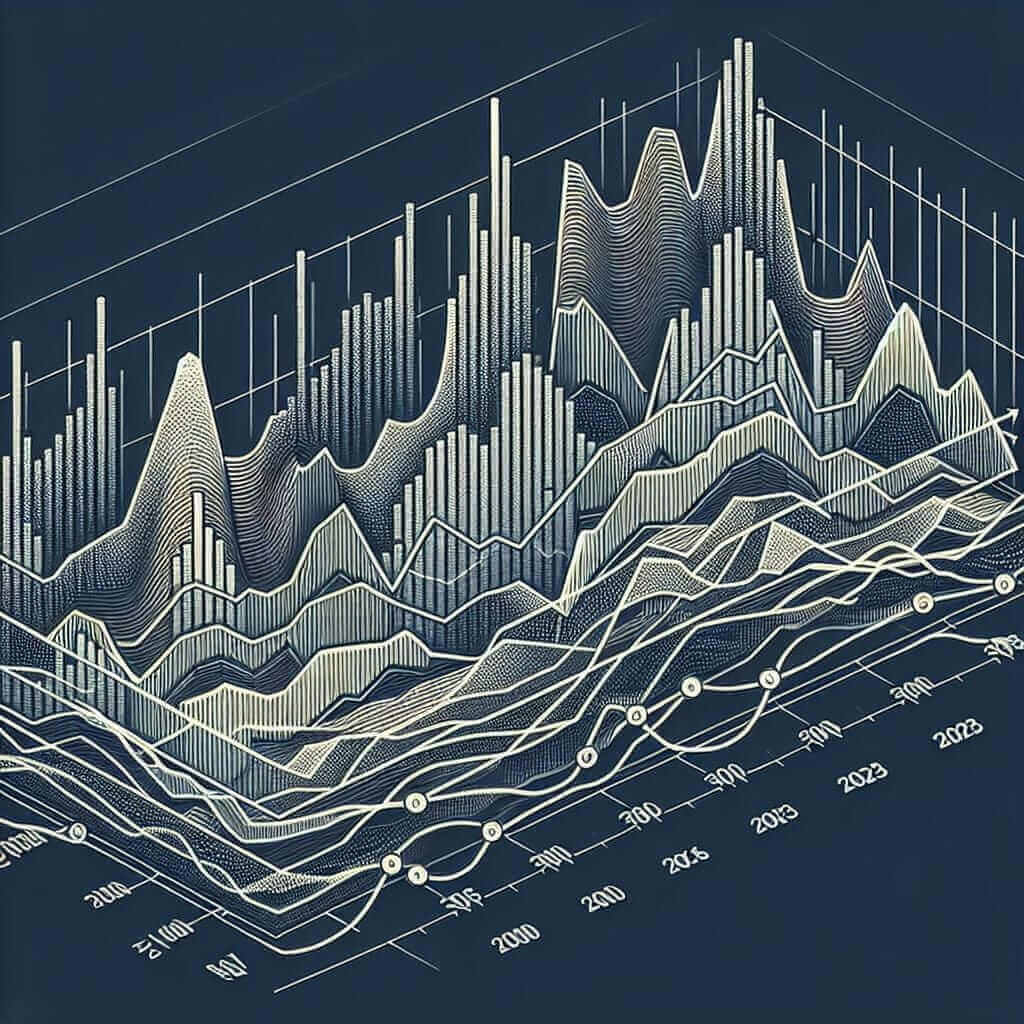Understanding trends in wages across various sectors is a crucial aspect of economic analysis and can often be encountered in the IELTS Writing Task 1. In this guide, we will explore how to effectively approach a task involving data on “Average Monthly Wages in Different Sectors (2000-2023)”. We’ll provide an example task, analyze the task, and offer a sample answer to help you prepare for this type of question.
Introduction
In the IELTS Writing Task 1, you may be asked to describe information presented in a graph, table, chart, or diagram. Such tasks require you to summarize and compare data accurately and coherently. For instance, a task may involve presenting data on the average monthly wages in different sectors over a period, such as from 2000 to 2023.
Example Task
You should spend about 20 minutes on this task.
The table below shows the average monthly wages (in USD) in three different sectors from 2000 to 2023.
| Year | Sector A | Sector B | Sector C |
|---|---|---|---|
| 2000 | 2,000 | 2,500 | 1,800 |
| 2005 | 2,300 | 2,700 | 2,000 |
| 2010 | 2,600 | 2,900 | 2,300 |
| 2015 | 2,800 | 3,200 | 2,500 |
| 2020 | 3,100 | 3,600 | 2,800 |
| 2023 | 3,300 | 3,900 | 3,000 |
Summarize the information by selecting and reporting the main features and make comparisons where relevant.
Analysis of the Task
When analyzing the data presented:
- Identify the Time Span: The data spans from 2000 to 2023.
- Sector Comparison: Compare the wages in Sector A, Sector B, and Sector C over the years.
- Trends and Changes: Note any significant trends or changes in the wages within each sector and between sectors.

Writing the Report
Introduction
Begin by paraphrasing the task description. Clearly state the time frame and the sectors involved.
Summary of Main Features
In this section, highlight the most noticeable trends. For instance:
- Increase in wages across all sectors.
- Sector B consistently has the highest wages.
Detailed Comparisons
Provide detailed comparisons and specific changes over the years for each sector.
Sample Answer
The table illustrates the average monthly wages in USD for three different sectors over the period from 2000 to 2023.
Overall, the wages in all three sectors have shown an upward trend. Sector B has consistently offered the highest wages, followed by Sector A, with Sector C having the lowest wages throughout the years.
In 2000, the average monthly wages were $2,000 in Sector A, $2,500 in Sector B, and $1,800 in Sector C. By 2023, these wages had increased to $3,300, $3,900, and $3,000 respectively for Sectors A, B, and C.
Sector A saw a gradual increase in wages from $2,000 in 2000 to $3,300 in 2023. Sector B’s wages increased from $2,500 to $3,900 over the same period, registering the highest increase among the three sectors. Sector C, while starting at the lowest level, also experienced a steady rise from $1,800 in 2000 to $3,000 in 2023.
In summary, while all sectors saw wage increases, Sector B consistently provided the highest wages across the period studied.
(Word count: 185)
Tips for Writing
- Paraphrasing: Avoid copying words directly from the task. Use synonyms and rephrase sentences.
- Comparisons and Details: Make sure to compare the data effectively and pick out key details.
- Clear Structure: Maintain a clear and logical structure with an introduction, overview, and detailed comparisons.
Vocabulary and Grammar Tips
- Tense Consistency: Use the past tense when describing past data and present perfect for trends up to the present.
- Comparison Structures: Use comparative phrases like “higher than”, “more significantly”, etc.
- Linking Words: Use words like “while”, “whereas”, “in contrast”, and “similarly” to show relationships between data points.
- Descriptive Adjectives and Adverbs: Words like “significant”, “steady”, “consistent”, “major”, and “gradual” help describe trends accurately.
Key Vocabulary
- Consistent (adj): /kənˈsɪst(ə)nt/
- Gradual (adj): /ˈɡrædʒ.u.əl/
- Upward trend (n): /ʌpwərd trɛnd/
- Significant (adj): /sɪɡˈnɪfɪk(ə)nt/
- Sector (n): /ˈsɛktər/
Conclusion
In summary, to effectively tackle an IELTS Writing Task 1 involving wage trends, summarize the key points, make relevant comparisons, and ensure your report is well-structured and clear. Aim for precision in language and clarity in presenting data to achieve a high band score. Practice using real data and refer to past IELTS tasks for the best preparation.